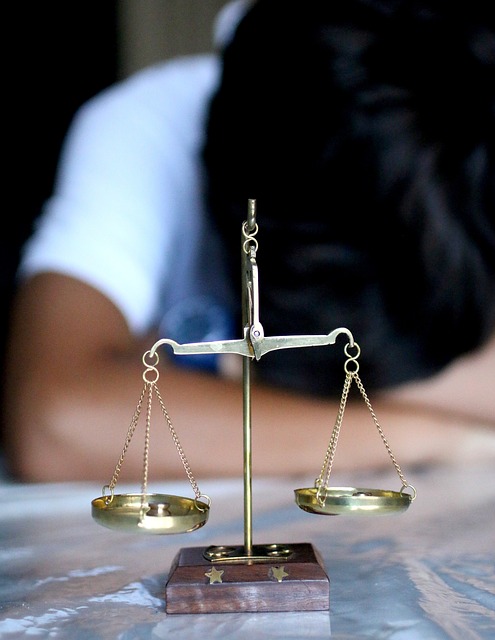Youth Justice focuses on fair treatment for young people in the criminal system, emphasizing restorative practices and rehabilitation. Vehicle Impoundment and DUI laws, while crucial for public safety, must consider age-specific impacts, especially on low-income and young drivers. These laws disproportionately affect marginalized youth, leading to harsher penalties and impacting future prospects. Non-profit organizations provide legal guidance, empowering teens to understand their rights. Strategic reforms aim to revise vehicle impoundment policies for DUI, reduce social disparities, and promote justice through empathy and rehabilitation-focused sentencing.
Youth justice aims to ensure fair treatment, especially in cases involving vehicle impoundment laws and DUI charges. This article explores critical aspects of youth justice, delving into the foundations of fair treatment within legal systems. We analyze vehicle impoundment rules, their impact on young drivers, and disparities in enforcement practices. Additionally, it examines DUI laws, highlighting their unique implications for adolescents. The piece also navigates resources available to young people and presents strategies for reform to promote more equitable justice practices.
- Understanding Youth Justice: The Foundation of Fair Treatment
- Vehicle Impoundment Laws: A Closer Look at the Rules and Their Impact
- DUI (Driving Under the Influence) and Its Implications for Young Drivers
- Disparities in Enforcement: Are Youths Unfairly Targeted?
- Navigating the System: Rights and Resources for Young People
- Strategies for Reform: Promoting Equitable Justice Practices
Understanding Youth Justice: The Foundation of Fair Treatment

Youth Justice, at its core, revolves around ensuring fair treatment for young people entangled in the criminal justice system. Understanding this concept begins with recognizing that youth, due to their age and developmental stage, often require distinct approaches and considerations compared to adults. The foundation of Youth Justice lies in promoting restorative practices, focusing on rehabilitation, and acknowledging the unique needs and potential for growth within this demographic.
One critical aspect that illustrates the need for fair treatment is the application of laws such as Vehicle Impoundment and DUI (Driving Under the Influence). While these laws aim to deter dangerous behavior, their implementation should consider the age-specific circumstances and potential long-term impacts on youth offenders. Balancing public safety with restorative justice measures can lead to more positive outcomes, fostering a sense of accountability while encouraging rehabilitation and reintegration into society.
Vehicle Impoundment Laws: A Closer Look at the Rules and Their Impact

Vehicle impoundment laws, often closely tied to DUI (Driving Under the Influence) regulations, are designed to deter impaired driving and ensure public safety. These laws allow law enforcement to seize and impound vehicles driven by individuals suspected or convicted of DUI offenses. The process typically involves a series of strict procedures, including administrative and legal requirements, to protect both the rights of the driver and the broader community.
The impact of vehicle impoundment is multifaceted. On one hand, it serves as a powerful deterrent, removing potentially hazardous vehicles from the roads immediately. However, critics argue that such measures can disproportionately affect low-income communities and young drivers, who may face significant financial burdens due to impound fees and the cost of retrieving their vehicles. Balancing public safety with equitable enforcement remains a key challenge in shaping effective Vehicle Impoundment Laws under DUI regulations.
DUI (Driving Under the Influence) and Its Implications for Young Drivers

For young drivers, a single moment of poor decision-making can have significant consequences, especially if it involves Driving Under the Influence (DUI). In many jurisdictions, DUI laws are strictly enforced to ensure road safety and prevent potentially fatal accidents. When a young person is charged with DUI, they often face not only legal repercussions but also long-lasting implications for their future. Vehicle impoundment is a common consequence; the car involved in the incident may be seized and stored for a specified period, impacting the driver’s mobility and independence.
These strict measures serve as a deterrent, aiming to discourage underage individuals from endangering themselves and others by operating vehicles while under the influence of alcohol or drugs. With each DUI case, there’s an opportunity to educate young people about responsible drinking and driving habits, potentially reducing future incidents. Additionally, the legal process can prompt discussions on the availability and accessibility of support systems for at-risk youth, addressing the underlying issues that may contribute to such behaviors.
Disparities in Enforcement: Are Youths Unfairly Targeted?

In discussions around youth justice, one pressing issue is the concern over potential disparities in enforcement practices. There are suggestions that young people, particularly those from marginalized communities, may be disproportionately targeted by certain laws and policies. For instance, Vehicle Impoundment and DUI (Driving Under the Influence) laws have raised eyebrows due to their apparent heavy-handed application, especially among youths. Critics argue that these measures often result in harsher penalties for young offenders compared to their adult counterparts, even when similar infractions are involved.
This disparity could be linked to factors such as socio-economic status and racial biases within the justice system. The impact of such disparities is significant, potentially leading to long-lasting effects on a youth’s future prospects, including education and employment opportunities. As such, examining these practices and their implications is crucial to ensuring fair treatment for all young people, regardless of their background.
Navigating the System: Rights and Resources for Young People

Navigating the justice system can be a complex and intimidating process, especially for young individuals who may lack experience and understanding of their rights. For teens facing charges, whether it’s a DUI or issues related to vehicle impoundment, it’s crucial they are equipped with knowledge about their legal entitlements. Many youth might feel overwhelmed by the procedures and terminology used in court, making it essential for them to have access to resources that simplify these processes.
Non-profit organizations and community legal clinics often play a vital role in providing guidance and support to young people. These entities can offer explanations of legal rights, help interpret laws like DUI and impoundment regulations, and ensure youth understand the potential consequences. By offering such assistance, they empower teens to actively participate in their legal defense, making the system more accessible and fair for all involved.
Strategies for Reform: Promoting Equitable Justice Practices

In striving for youth justice fair treatment, several strategic reforms can promote equitable justice practices. One key area is revisiting and revising policies related to vehicle impoundment, especially in cases involving DUI (Driving Under the Influence). The current system often disproportionately affects young individuals, exacerbating existing social and economic disparities. By implementing more nuanced criteria for impoundment and providing alternatives, such as community service or participation in rehabilitation programs, we can ensure that justice is served without adding unnecessary barriers to youth development.
Furthermore, education and training for law enforcement officers and judicial personnel are essential. Teaching them about the unique challenges faced by young people, including potential trauma and underdeveloped decision-making skills, can lead to more empathetic interactions. This, in turn, can result in fairer outcomes, from reduced charges to alternative sentencing options that prioritize rehabilitation over punishment. Thus, these reforms not only promote justice but also foster a more compassionate and effective criminal justice system.
In conclusion, achieving fair treatment within youth justice requires a nuanced understanding of various factors, including vehicle impoundment laws and their impact on young drivers, as well as addressing disparities in enforcement. By examining these issues and implementing strategic reforms, we can create a more equitable system that protects the rights of young people while promoting safe and responsible behavior. Strategies for reform should focus on providing resources and education to empower youth, ensuring they are aware of their rights and have access to support systems, especially when facing charges related to DUI or vehicle impoundment. Ultimately, these efforts will contribute to a more just and compassionate approach to youth justice.






